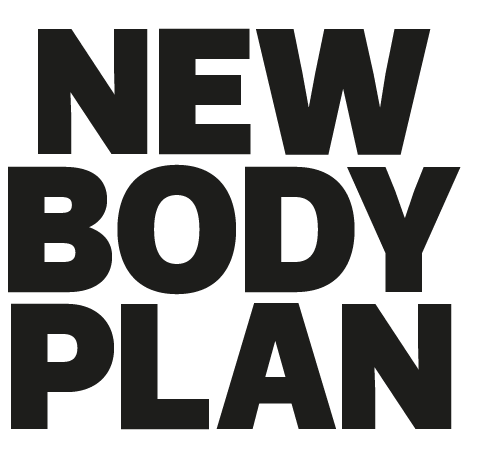Your complete guide to Heart Rate Variability training
Discover the key role your Heart Rate Variability (HRV) plays in your physical and mental wellbeing and how to use heart rate variability training to train smarter and get the results you want faster, says New Body Plan’s Joe Warner
Find your perfect fat-loss plan!
Take the New Body quiz!
You may clock miles, count calories, and conquer reps, but if you’re not tuning into your Heart Rate Variability (HRV) you’re missing out on a powerful monitoring tool to track your results and recovery. As an internal barometer of your physical and psychological recovery, HRV provides nuanced insights that can empower you to optimise your training and mental well-being. Here’s all you need to know to take your training to the next level!
What is heart rate variability (HRV)?
HRV is the fluctuation in the time interval between each heartbeat. A high HRV often signifies a healthy, well-functioning body and robust stress-resilience, whereas low HRV can indicate poor stress adaptation, fatigue, or even impending illness.
Why should I care about HRV?
“Higher HRV has been found to be associated with reduced morbidity and mortality, and improved psychological well-being and quality of life,” states a 2013 paper in Frontiers in Psychology. Thus, monitoring HRV can act as a guide to understanding your body’s readiness to perform, helping tailor your workout intensity accordingly.
How is HRV measured?
HRV can be measured using an electrocardiogram (ECG) or photoplethysmography via a heart rate monitor or a smartwatch. There are several mobile apps available today that can analyse and present your HRV data.
What is heart rate variability training?
Heart Rate Variability training is an approach to exercise that uses daily HRV measurements to guide your training schedule. Instead of following a rigid training programme, HRV training prioritises flexibility. On days when your HRV is high, signalling robust recovery and readiness, you can engage in intense workouts. Conversely, when your HRV is lower, indicating a need for rest, it’s recommended to focus on recovery activities like light exercises, stretching, or yoga.
HRV training thus harnesses the power of physiological data to balance stress and recovery, optimising performance while mitigating the risk of overtraining. As a 2013 study in the Journal of Strength and Conditioning Research noted, “periods of intensified training should be matched with an adequate recovery to prevent decreases in HRV and possible overreaching.”
What is a good HRV score or measurement?
HRV is highly individualised, varying based on age, fitness level, and overall health. Generally, for adults, an HRV in the 55-105 milliseconds (ms) range can be considered healthy. However, it’s crucial to observe the trend in your HRV over time rather than individual readings. As a 2017 study in the European Journal of Preventive Cardiology advises, “Instead of evaluating HRV merely based on isolated absolute values, it is recommended to assess changes in individual HRV over time.” Regular monitoring and understanding how your lifestyle choices affect your HRV trend can offer more meaningful insights into your well-being.
What affects HRV?
HRV is affected by several factors: stress, sleep, hydration, diet, and even your breathing patterns. As one 2019 study in BMC Sports Science, Medicine and Rehabilitation notes, “controlled breathing at six breaths per minute has been associated with an increase in HRV”.
Can exercise improve my HRV?
Yes, exercise can indeed improve HRV, but there’s a catch – it’s about quality, not just quantity. The relationship between exercise and HRV isn’t linear; it’s a nuanced interplay affected by factors like intensity, duration, and individual fitness levels.
While exercise is a form of physiological stress, it prompts your body to adapt and become more resilient over time. A balanced, well-structured training regime promotes these adaptations, leading to a healthier, higher HRV. However, overdoing it without adequate recovery can lead to decreased HRV, signifying overtraining or fatigue.
The intensity of exercise plays a critical role. According to a study published in the European Journal of Applied Physiology (2015), “a moderate volume of high-intensity interval training increases HRV”. High-intensity interval training (HIIT) – workouts interspersed with periods of intense effort and rest – appears to be particularly effective in enhancing HRV.
But remember, what’s too much or too little varies from person to person, and that’s where HRV comes into its own as a bespoke tool for tuning into your body’s needs. Tracking your HRV allows you to navigate this delicate balance, helping you tailor your workouts to optimise both fitness gains and recovery.
Can mindfulness and meditation affect HRV?
Absolutely. The interplay between mindfulness, meditation, and HRV goes deeper than you might initially perceive. Mindfulness and meditation are techniques of focus, training the mind to rest in the present, and reduce unnecessary stress and thought clutter. This mental tranquillity can mirror itself in your physiological responses, influencing heart rate variability.
The practice of mindfulness and meditation, by fostering a calm mental state, can stimulate your body’s parasympathetic (“rest and digest”) response, effectively lowering your heart rate and increasing HRV. A study published in Frontiers in Human Neuroscience (2019) found that “mindfulness meditation interventions have the potential to significantly increase HRV”.
The mechanisms aren’t fully understood yet, but one theory posits that these practices reduce stress-related activity in the hypothalamic–pituitary–adrenal axis and promote vagal tone, both of which can enhance HRV.
More than an isolated effect, the improvement in HRV is indicative of a broader benefit of these practices on your overall wellbeing, including enhanced stress resilience, better emotional regulation, and improved cognitive function. So, cultivating a regular mindfulness or meditation routine could be a game-changer for both your mental health and HRV.
Is HRV a better fitness indicator than heart rate?
While heart rate provides valuable insight into your cardiovascular fitness, HRV offers a more comprehensive picture of your overall physiological health, stress levels, and recovery status.
How can I improve your heart-rate variability?
- Maintain a regular sleep schedule.
- Incorporate high-intensity interval training into your routine, but remember – balance is key.
- Practice controlled breathing techniques or mindfulness meditation.
- Stay hydrated and maintain a balanced diet.
- Prioritise stress management strategies – rest and relaxation are not luxuries, they’re necessities.
Find your perfect fat-loss plan!
Take the New Body quiz!
Burn fat and lose your belly with the best cardio for weight loss
Burn fat and lose your belly with the best cardio for weight loss

